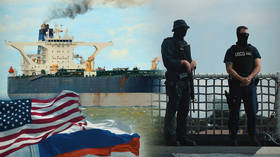Cocaine production at record levels – UN

Production of coca, the base ingredient of cocaine, has risen by 35% compared to pre-pandemic levels, as drug cartels take advantage of receding Covid-19 restrictions to smuggle record amounts of the narcotic across the world, according to a report from the United Nations Office on Drugs and Crime (UNODC).
The spike in cocaine production is the sharpest rise since 2016 and comes amid efforts by powerful South American drug cartels to streamline the efficiency of drug labs.
“The pandemic was a bit of a blip for the expansion of cocaine production,” noted UNODC researcher Antoine Vella in comments published by The Guardian. He added that it has since “rebounded” to levels higher than before Covid-19. Demand dropped in recent years due to the closure of many bars and nightclubs during lockdowns, the report explains.
The findings suggest that cartels were forced to devise alternative methods to distribute the drug during the pandemic after many international flights were grounded and road traffic was heavily policed, forcing them to stockpile the drug.
Various drug seizures showed that traffickers had attempted to disguise cocaine in the distribution of everyday items such as inside avocados and even surgical facemasks. One case, officials said, even saw traffickers break the substance down into fabrics to bypass authorities before being reconstituted at its eventual destination.
The report adds that UK officials have noted a “significant increase” in the seizure of cocaine delivered via international postal systems as well as through courier services.
“There’s no question that there is no limit to the ingenuity of traffickers,” Vella said, as they look to maintain supply to Europe and North America, regions responsible jointly for three-quarters of global cocaine consumption.
Cartels have also established new routes to traffic and to distribute the drug as they look to avoid scrutiny from anti-narcotics agents, particularly in developing markets in Asia and Africa, the report said. Ports such as Rotterdam, Antwerp and Hamburg have risen in prominence for the importation of the narcotic, compared to traditional entry points into Europe in Spain and Portugal.
The global demand for the drug has also led to increased coca cultivation and production in Bolivia, Peru and Colombia – where, in the latter, the amount of land used to produce coca bushes rose by 40% in 2021 to a total of 204,000 hectares.













